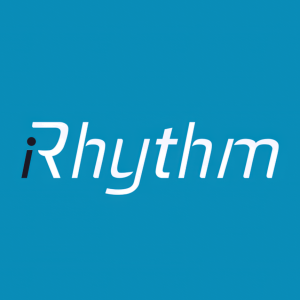iRhythm Data Presented at the American Heart Association 2024 Scientific Sessions Reinforce Clinical and Health Economic Value of Zio Long-Term Continuous Monitoring
Rhea-AI Summary
iRhythm Technologies (NASDAQ:IRTC) presented five new studies at the American Heart Association's 2024 Scientific Sessions, focusing on three key areas of long-term continuous monitoring (LTCM): digital patient engagement, arrhythmia patterns during sleep/activity, and healthcare economic impact. Key findings showed that digital tools improved device return compliance to 94.8% when both app and text messaging were used, compared to 74.6% without digital intervention. The new Zio monitor demonstrated 14% better wear comfort than its predecessor. A significant cost analysis revealed higher healthcare costs for arrhythmia patients with diabetes and COPD, suggesting potential savings through early detection.
Positive
- Digital engagement tools improved device return compliance by 20.2 percentage points
- New Zio monitor showed 14% improvement in wear comfort compared to previous version
- Algorithm showed high sensitivity (97%) and specificity (100%) in activity detection
Negative
- Healthcare costs significantly higher for arrhythmia patients (T2D: $34,171 vs $18,687; COPD: $37,719 vs $25,656)
- Hospitalization rates more than doubled for arrhythmia patients
- Length of hospital stay increased by 2-5 days for arrhythmia patients
News Market Reaction 1 Alert
On the day this news was published, IRTC declined 4.46%, reflecting a moderate negative market reaction.
Data tracked by StockTitan Argus on the day of publication.
Five new studies span three focus areas for LTCM devices: digital engagement and patient satisfaction, arrhythmia patterns during sleep and activity, and the potential health care resource and economic impact of early arrhythmia detection in patients with type 2 diabetes and COPD
SAN FRANCISCO, Nov. 18, 2024 (GLOBE NEWSWIRE) -- iRhythm Technologies, Inc. (NASDAQ:IRTC) today announced the results of five new studies presented at the American Heart Association’s 2024 Scientific Sessions in Chicago, IL. The findings underscore iRhythm’s commitment to advancing ambulatory cardiac monitoring services to improve patient outcomes, enhance healthcare resource utilization, and provide access to affordable care, including for patients with chronic conditions.
The five studies presented by iRhythm span three focus areas for long-term continuous monitoring (LTCM): patient engagement and satisfaction through digital tools and patient-centered product enhancements, evaluating arrhythmia patterns during periods of sleep and activity, and assessing the potential healthcare resource and economic impact of early arrhythmia detection in patients with type 2 diabetes and chronic obstructive pulmonary disease (COPD).
"These new findings underscore iRhythm's commitment to rigorous scientific evidence," said Mintu Turakhia, MD, iRhythm's Chief Medical and Scientific Officer and EVP of Product Innovation. "Our data demonstrates the significant health economic benefits of early arrhythmia detection in often-overlooked conditions like diabetes and COPD, highlights greater patient engagement through our patient-centered digital tools that complement our services, and reveals distinct arrhythmia patterns associated with sleep and activity."
LTCM Patient Engagement and Satisfaction Through Digital Tool and Product Enhancements
Two studies validated the impact of digital health tools on improving patient compliance with timely device return and demonstrate the value of using patient-centric feedback to guide enhancements in the latest Zio® monitor.
- “Digital Engagement With a Patient Smartphone App and Text Messaging is Associated with Increased Compliance in Patients Undergoing Long-Term Continuous Ambulatory Cardiac Monitoring”
- “Feasibility of Point-Of-Wear Patient Satisfaction Surveys to Validate Patient-Centered Product Enhancements: Results From Over 300,000 Patients for Long-Term Ambulatory Cardiac Monitoring”
Evaluating Sleep and Activity Arrhythmia Patterns Using LTCM
Two studies assessed the feasibility and clinical utility of using the Zio system to monitor arrhythmias in relation to sleep and activity patterns.1 Analyzing and classifying arrhythmia occurrences during sleep and physical exertion provides insights that may inform more personalized arrhythmia management.
- “Determining the Accuracy of Sleep and Activity Patterns in Patients Undergoing Long-Term Ambulatory ECG Monitoring”
- “Characterization of Arrhythmia Occurrence During Sleep and Activity in Patients Undergoing Long-Term Continuous Ambulatory ECG Monitoring”
Potential Healthcare Resource and Economic Value of Early Arrhythmia Detection in Patients with Type 2 Diabetes and Chronic Obstructive Pulmonary Disease (COPD)
This retrospective analysis of medical claims data examined the healthcare resource burden and medical costs of managing undiagnosed and untreated arrhythmias in patients with type 2 diabetes (T2D) and chronic obstructive pulmonary disease (COPD). The analysis was conducted by Eversana (Overland Park, KS, USA) and the preliminary findings suggest that early detection with arrhythmia monitoring devices has the combined potential to help prevent serious outcomes like stroke and heart failure and significantly reduce acute care utilization and related costs in these populations.
- “Real World Evidence on Health Care Resources Utilization and Economic Burden of Arrhythmias in Patients with Type 2 Diabetes (T2D) and Chronic Obstructive Pulmonary Disease (COPD)”
These data, presented at the American Heart Association’s 2024 Scientific Sessions, are part of iRhythm’s comprehensive clinical evidence program, encompassing over 100 original research publications2 and insights from over 1.5 billion hours of curated heartbeat data.2 This ongoing commitment reflects iRhythm's dedication to expanding clinical evidence that supports improved patient outcomes.
iRhythm’s AHA Presentations Details:
This study sought to determine if two optional direct-to-patient digital interventions, the MyZio smartphone app and short messages services (SMS) text notifications, impacts patient compliance (i.e., activation, wear, and device return within 45 days) in patients who self-applied and activated a Zio 14-day patch-based long-term continuous ambulatory monitoring (LTCM) device shipped directly to their home. Distribution of the use of digital tools and compliance outcomes was evaluated in 169,131 patients. Device activation, usage, and return compliance was highest (
Researchers sought to understand the feasibility and value of collecting patient survey data at the point of care to assess quality improvements associated with use of a novel 14-day patch-based long-term continuous ambulatory ECG monitor (LTCM). Specifically, the study compared product experience and patient satisfaction associated with the prior generation LTCM (Zio® XT) to that of a next-generation, FDA-cleared LTCM product (Zio® monitor) designed with patient-centered features, including a more breathable adhesive, waterproof housing,3,4 thinner profile, and lighter weight.2 Among 334,054 respondents, the new LTCM was associated with a greater proportion of affirmative responses across all survey categories, including a 14-percentage point improvement in wear comfort as compared to the prior generation device (
Researchers sought to develop and assess performance of an algorithm to classify periods of sleep, activity (>2mph walking), and inactivity1 using a novel ambulatory ECG (AECG) patch (Zio® monitor) with embedded accelerometry. A prospective clinical study enrolled participants across four American Academy of Sleep Medicine- (AASM) qualified sleep centers to support algorithm training and validation. Eighty-one (81) study participants wore the Zio® monitor AECG patch and a commercially available actigraphy reference device simultaneously over a 14-day study period, which included in-clinic overnight polysomnography (PSG) sleep testing and a 6-minute walk test. Data acquired were split into training (n=40) and validation (n=41) sets. Feature and model selection utilized five-fold cross-validation on the training set, focusing on total activity and body angle. Algorithm sensitivity and specificity (assessed over 1-minute epochs vs. PSG reference) in sleep detection were
Researchers sought to quantify the occurrence of arrhythmias detected by long-term (≤14 days) continuous ambulatory ECG monitoring (LTCM) during periods of sleep, activity and inactivity.1 The analysis is the largest study of its kind, and included 23,962 patients (
This study examined healthcare resource utilization (HCRU) and medical costs of managing arrhythmias in T2D and COPD, and the potential impact of early detection on the rate of hospitalization and ER visits. Research included a retrospective claims analysis using the Merative MarketScan and the Symphony Integrated Dataverse databases. Study participants were > 18 years with claims for T2D or COPD or both T2D and COPD (T2D-COPD) and assigned into groups: Target: patients without prior history of arrythmias, followed by arrythmias claims. Control: patients with either of the conditions, but without arrhythmia claims. Target and control were matched 1:1 on demographic, year of first episode of arrhythmia, risk (ECI, DSI, Goki criteria). HCRU and medical cost drivers over 24 months were analyzed. HCRU of patients with the primary comorbidity and an associated arrhythmia was compared to those without an arrhythmia. The total cost of care per patient / year was significantly higher for all target patients compared to control (T2D
About iRhythm Technologies
iRhythm is a leading digital health care company that creates trusted solutions that detect, predict, and prevent disease. Combining wearable biosensors and cloud-based data analytics with powerful proprietary algorithms, iRhythm distills data from millions of heartbeats into clinically actionable information. Through a relentless focus on patient care, iRhythm’s vision is to deliver better data, better insights, and better health for all.
Media Contact
Kassandra Perry
irhythm@highwirepr.com
Investor Contact
Stephanie Zhadkevich
investors@irhythmtech.com
1 The accelerometer data and the sleep and activity classification algorithm presented in this study are intended exclusively for research purposes and are not available for any commercial use.
2 Data on file. iRhythm Technologies, 2023.
3 Data on file. iRhythm Technologies, 2017, 2023.
4 The Zio monitor device should not be submerged in water. During a bath, keep the device above water. Please refer to the Zio monitor labeling instructions or Patient Guide for the full set of details.
5 Chinoy ED, Cuellar JA, Huwa KE, Jameson JT, Watson CH, Bessman SC, Hirsch DA, Cooper AD, Drummond SPA, Markwald RR. Performance of seven consumer sleep-tracking devices compared with polysomnography. Sleep. 2021 May 14;44(5):zsaa291.
6 Hannun AY, Rajpurkar P, Haghpanahi M, Tison GH, Bourn C, Turakhia MP, Ng AY. Cardiologist-level arrhythmia detection and classification in ambulatory electrocardiograms using a deep neural network. Nat Med. 2019 Jan;25(1):65-69. Current FDA-cleared rhythm classification algorithm: K222389.








